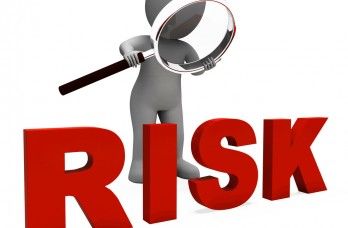Asset protection: What is your target value?
Consider the following types of assets when determining your own defensive needs and exactly what you have to lose if you don’t act.
©Stuart Miles

Knowing all your risks and exactly what you have exposed is a vital part of physicians’ asset protection planning. Consider the following when determining your own defensive needs and exactly what you have to lose if you don’t act.
Are your real estate assets exposed?
Personal residences. For many doctors, home equity is an asset that represents a significant portion of their net worth because they have been disciplined in paying down their mortgage and/or the high price of the home itself. Creditor protection on your primary residence varies from state to state (from a few thousand dollars to unlimited dollar value) and is generally referred to as the “homestead” exemption. This is protection is available on one home only, so if you have multiple personal residences or vacation homes, those aren’t protected. This includes those properties titled in the name of your “revocable living trust” or family trust, which are not asset protection vehicles for you during your life.
To determine your home’s exposed equity, simply take the current market value and subtract any mortgage or other debt and your state’s homestead exemption. This exemption amount is typically found in a list of state bankruptcy statutes that also lists your other creditor exempt assets and the limited protection that the law may provide to non-exempt assets. As an example, a physician I just spoke with in Scottsdale has a $985K value home with only $50K left on the mortgage and the Arizona homestead exemption is $150K. This means he has $785K exposed in his home, or about a third of his current net worth. That’s an amount worth collecting against for almost any creditor, and the idea that judgment creditors can’t or won’t take your home is a common anecdotal myth that makes collections attorneys laugh.
Investment real estate. Any investment real estate you hold personally or in any revocable estate planning entity is exposed to all your personal and professional liability, as is any income stream it produces. If it is properly owned by an LLC and you are personally member of that LLC, any income stream it distributes to you is generally also exposed. Simple math on your exposure: sale value - debt = exposed equity (plus any cashflow it produces).
Liquid assets (non-exempt)
Your personal hard-dollar exposure here is the sum total of the following personal property assets that are titled in your own name, the name of your medical practice, or in the name of any revocable estate planning trust, etc.
- Cash, stocks, bonds, CDs, money market accounts, precious metals, and other liquid cash equivalents;
- Investment grade personal property like jewelry, coins, art, antiques, sports memorabilia, high value firearm collections, etc.;
- Income from other sources, including current or expected inheritance distributions, royalties, payments on any notes your hold;
- Intellectual property and any associated income;
- Other business income;
- Your garnishable, personally-earned income; and
- High value “toys” like boats, aircraft, exotic cars, etc.
Exempt assets (or are they?)
Qualified retirement plan assets are generally well protected across the United States, but the limits of that protection, like homestead, also vary from state to state. Refer to a resource like the one provided above on homestead to determine your local limits and conditions. There are differences in both dollar amount of the protection, which assets are exempt, and even the residency conditions required to avail of a specific state’s law for recent transplants. For example, a state could require you to have lived in that state for 24 months contiguously for their creditor protection laws to apply and may say that if you haven’t, the laws of the last state you were a resident of will apply.
Pay attention to details when making these calculations. Many assets are only, “Exempt if…”, meaning specific conditions need to be met. Examples of such assets include the cash value of life insurance, which might be protected if personally owned or in a life insurance trust (but which may require a lengthy vesting period and may have low dollar limits) or may be exposedif the medical practice is the policy owner.
Don’t forget your intangible assets
Not all assets can be insured or appraised, so factor in goodwill, reputation, seniority, and the other subjective factors that contribute to your income and success. Loss or damage of any of these assets may be a serious, permanent threat to your income.
Attorney Ike Devji has practiced in the areas of asset protection, risk management, and wealth preservation law exclusively for the last 15 years. He helps protect a national client base with over $5 billion in personal assets that includes several thousand physicians and is a contributing author to multiple books for physicians and a frequent medical conference speaker and CME presenter.
Health care’s 2025 revenue cycle imperative: Reduce administrative waste
January 22nd 2025Given that so much of the high costs associated with running a healthcare business remains outside of the organization’s control, financial leaders will have to consider how they can impact the one area that is in their control in 2025: reducing administrative waste.